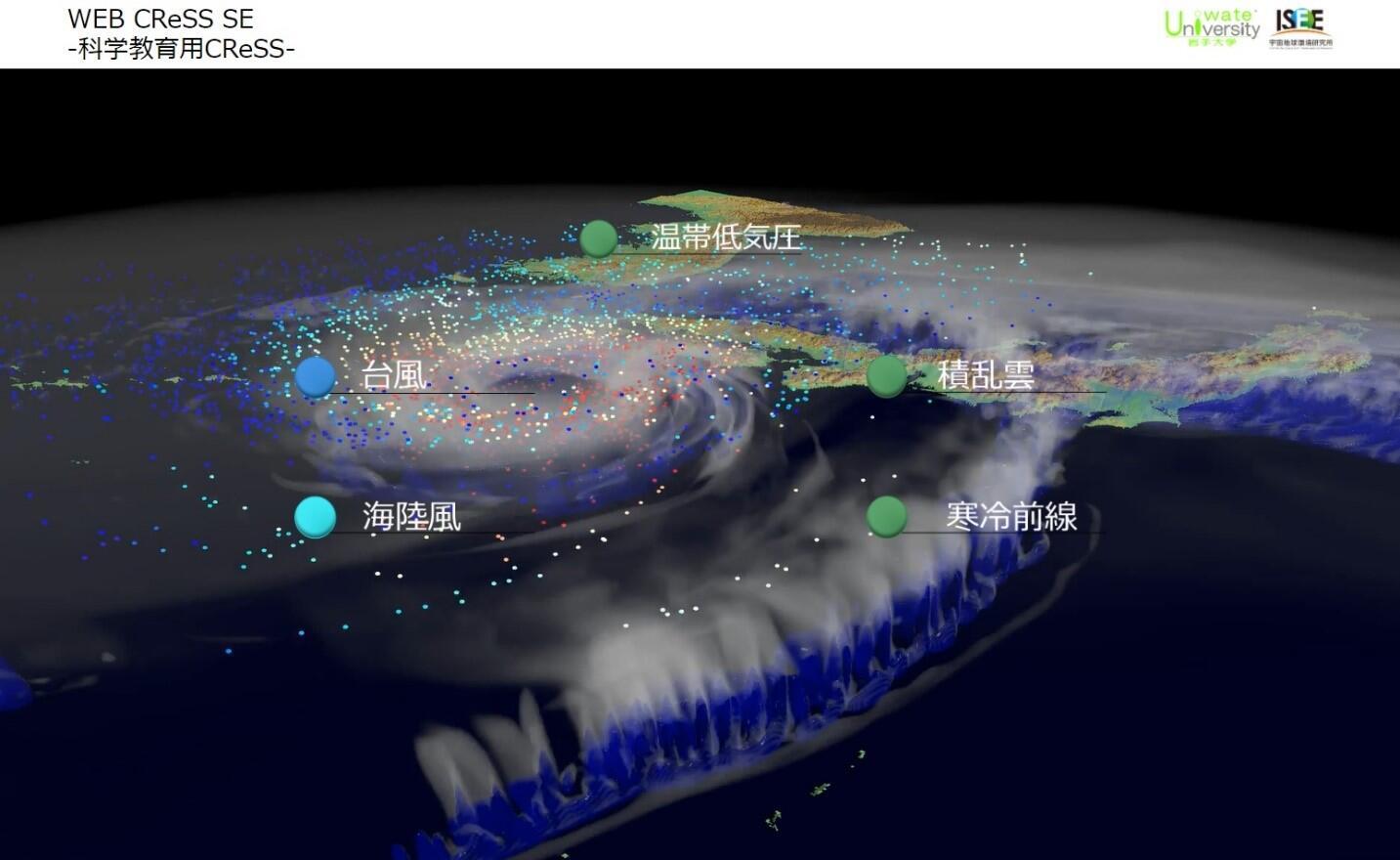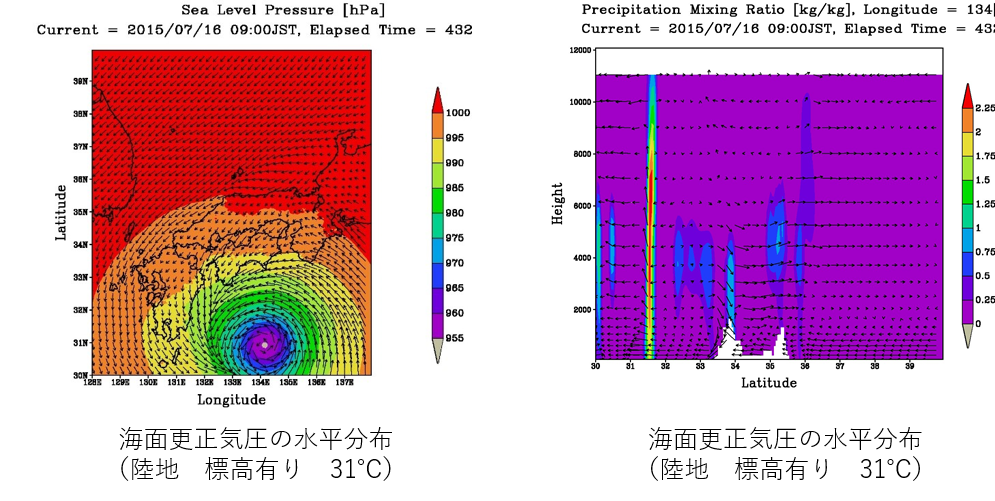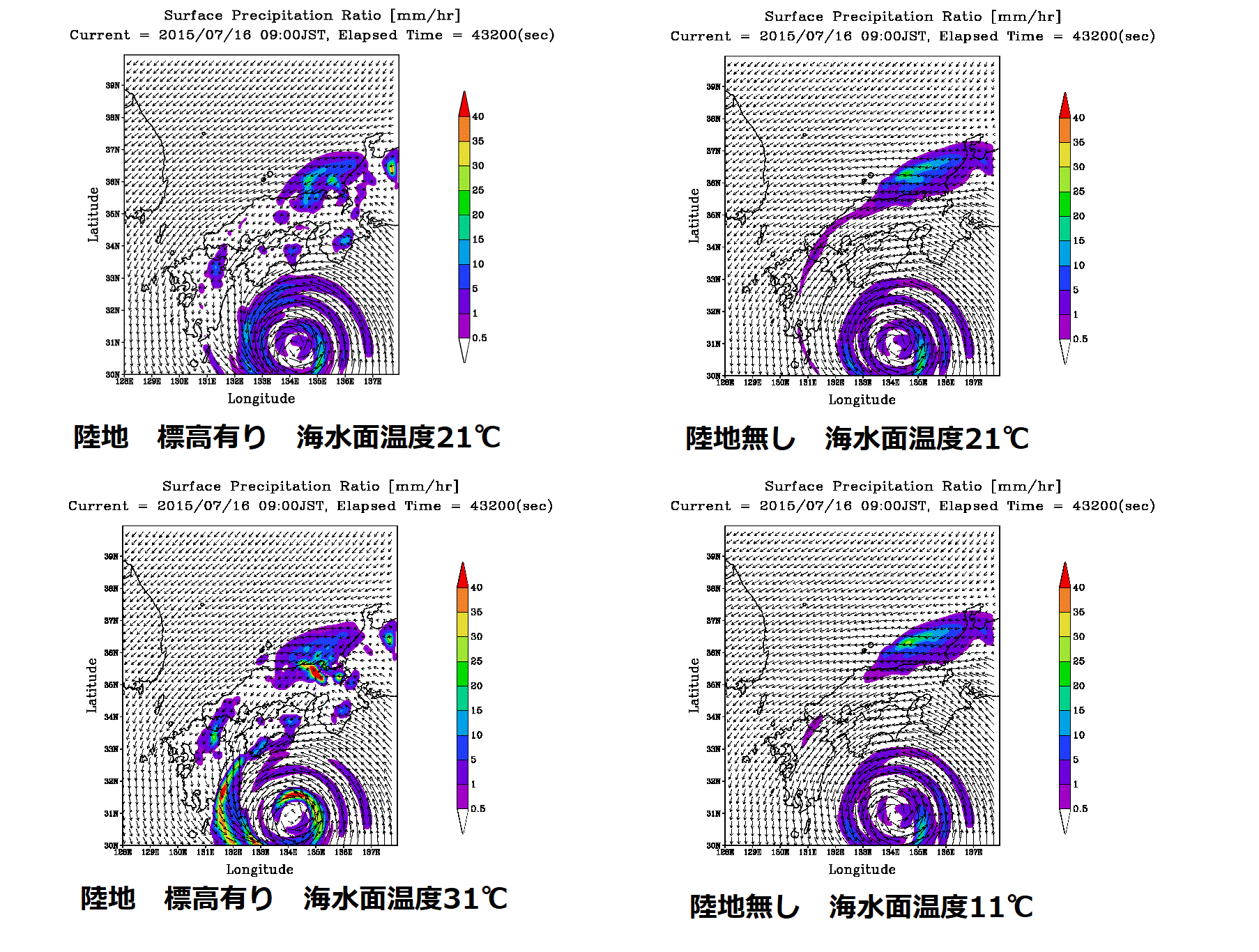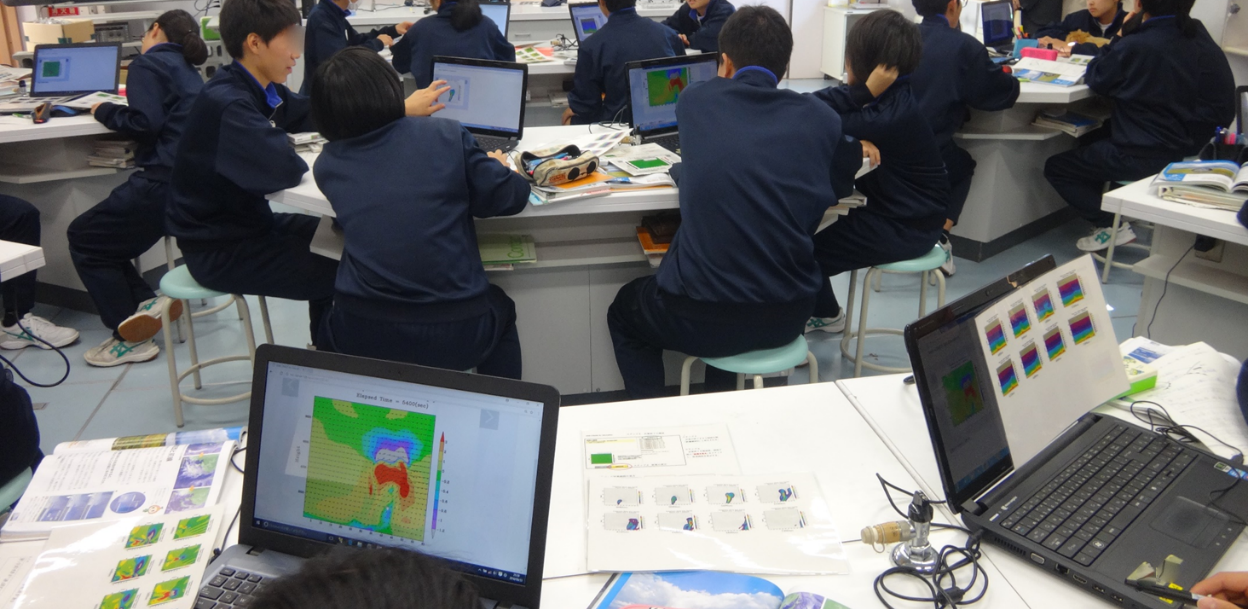- Target
- Contacts
- Access
- Document Request
- Language

Development of WEB-CReSS SE (Science Education), a numerical weather experiment software for science education

Faculty of Education Department of Science Education
Professor NAGOSHI Toshiyuki, Ph.D.
Science Education

There are four aspects of meteorology: atmospheric science, environmental science, disaster management science, and information science. In particular, the information science aspect of meteorology is at the forefront of other scientific disciplines, such as numerical weather forecasting using supercomputers and data acquisition systems for AMeDAS( The Automated Meteorological Data Acquisition System ),weather satellite images. In numerical weather forecasting, the basic equations of atmospheric science are numerically integrated to obtain solutions and then graphed in various ways. Today, it is possible to forecast a week in advance. Visualization of the flow of the atmosphere is also important because the atmosphere is invisible to the eye, except for clouds, rain and snow. Television and mobile devices have been devising various ways to visualize and transmit information.
However, in science education, numerical forecasting and experiments using supercomputers have been considered to be difficult. Therefore, we have developed an input interface that allows junior high school students to easily set up conditions for numerical experiments using the numerical weather simulation software "CReSS" developed for research in the TSUBOKI Laboratory at the Institute for Space and Earth Environment. We developed a numerical experiment software "WEB-CReSS SE".
This software runs on an ordinary Windows PC, uses only the CPU and flash memory, and writes the output to an SD card, and the software becomes the original PC after use. The top screen is shown in Figure 1, which shows the five types of phenomena studied in middle school science meteorology: typhoon, tropical cyclone, land and sea breeze, cold front, and cumulus convection. For example, we can investigate how typhoons behave (i.e., change their paths and sizes) by changing the sea surface temperature by ±10°C, eliminating land in the Japanese archipelago, or making it all sea level (Fig. 2 and Fig. 3). In other words, a large-scale control experiment of the "typhoon" is possible (Figure 4).
I met with the Chief of the Education Section of the American Meteorological Society in Washington a few years ago to exchange information about such a project. He told me that there was no such project in the U.S., so this is the first of its kind in the world. I hope that this software will become more popular in Japan in the future. We plan to make the software available on the website of Iwate University's Department of Science Education and the website of Nagoya University's TSUBOKI Laboratory, where it will be available for download (approximately 20 GB).
This software was developed by NAGOSHI Toshiyuki, Chief Scientist of the Grant-in-Aid for Scientific Research (KAKENHI) 17K04837-20H01666.




Translated with www.DeepL.com/Translator (free version)





